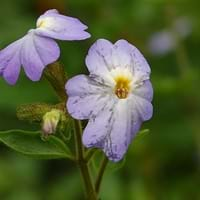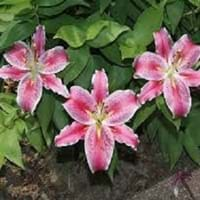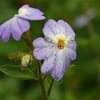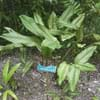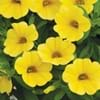Life Span
Perennial
Perennial
Type
Tender Perennial
Bulb or Corm or Tuber
Origin
South America
Hybrid origin
Types
Not Available
Oriental White
Pink Oriental
Light Pink Oriental
Red Oriental
Number of Varieties
Not Available
Habitat
Subtropical climates, Tropical regions
gardens, Tropical regions
USDA Hardiness Zone
10-15
4-8
Sunset Zone
H1, H2, 17, 23, 24
21,22
Habit
Cushion/Mound-forming
Upright/Erect
Flower Color
White, Blue Violet
Pink, Magenta, Rose
Flower Color Modifier
Bicolor
Bicolor
Fruit Color
Not Available
Green, Sandy Brown
Leaf Color in Spring
Light Green
Green
Leaf Color in Summer
Light Green
Light Green
Leaf Color in Fall
Light Green
Several shades of Green
Leaf Color in Winter
Light Green
Light Green
Leaf Shape
broad, flat
Heart-shaped
Plant Season
Summer, Fall
Summer
Sunlight
Partial Sun, Partial shade
Full Sun, Partial Sun
Type of Soil
Loam
Clay, Loam, Sand
The pH of Soil
Acidic, Neutral, Alkaline
Neutral
Soil Drainage
Well drained
Average
Bloom Time
Early Summer, Summer, Late Summer, Early Fall
Summer
Tolerances
Drought
Drought
Where to Plant?
Container, Ground, Pot
Ground, Pot
How to Plant?
Seedlings, Stem Cutting
From bulbs, From Rhizomes, Stem Planting
Plant Maintenance
Medium
Medium
Watering Requirements
Average Water Needs, Never Over-water
Keep the ground moist but not water-logged, Water more in summer, Water when soil is dry
In Summer
Lots of watering
Lots of watering
In Spring
Moderate
Moderate
In Winter
Average Water
Average Water
Soil pH
Acidic, Neutral, Alkaline
Neutral
Soil Type
Loam
Clay, Loam, Sand
Soil Drainage Capacity
Well drained
Average
Sun Exposure
Partial Sun, Partial shade
Full Sun, Partial Sun
Pruning
Remove damaged leaves, Remove dead branches, Remove dead leaves
Remove damaged leaves, Remove dead branches, Remove dead leaves
Fertilizers
All-Purpose Liquid Fertilizer
All-Purpose Liquid Fertilizer
Pests and Diseases
Aphids, Leaf spot, Red blotch, Whiteflies
Red blotch
Plant Tolerance
Drought
Drought
Flower Petal Number
Single
Single
Foliage Texture
Medium
Medium
Foliage Sheen
Matte
Glossy
Attracts
Aphids
Butterflies, Hummingbirds
Allergy
Not Available
Asthma
Aesthetic Uses
Beautification, Hanging Basket, Showy Purposes
Beautification, Bouquets
Beauty Benefits
Not Available
Not Available
Environmental Uses
Air purification
Air purification
Medicinal Uses
Not Available
Cough, Fever, Stomach pain, tuberculosis
Part of Plant Used
Flowers, Leaves
Flowers, Leaves
Other Uses
Used as Ornamental plant
Making Perfumes, Showy Purposes, Use in Chinese herbology, Used as Ornamental plant, Used for fragrance
Used As Indoor Plant
Yes
Yes
Used As Outdoor Plant
Yes
Yes
Garden Design
Bedding Plant, Container, Hanging Basket, Houseplant, Rock Garden / Wall
Container, Cutflower, Mixed Border
Botanical Name
BROWALLIA speciosa
LILIUM 'Acapulco'
Common Name
Amethyst Flower
Acapulco Oriental Lily, Oriental Lily
In Hindi
नीलम फूल
ओरिएंटल लिली
In German
Amethyst Blume
Orientalische Lilie
In French
Améthyste Fleur
Lily Oriental
In Spanish
amatista flor
lirio oriental
In Greek
Αμέθυστος λουλούδι
Oriental Lily
In Portuguese
flor Amethyst
Lily Oriental
In Polish
Amethyst Flower
Oriental Lily
In Latin
Amethyst Flower
Oriental Lily
Phylum
Magnoliophyta
Not Available
Class
Magnoliopsida
Not Available
Family
Solanaceae
Liliaceae
Clade
Angiosperms, Asterids, Eudicots
Angiosperms, Monocots
Tribe
Not Available
Lilieae
Subfamily
Not Available
Lilioideae
Number of Species
Not Available
Properties of Amethyst Flower and Oriental Lily
Wondering what are the properties of Amethyst Flower and Oriental Lily? We provide you with everything About Amethyst Flower and Oriental Lily. Amethyst Flower doesn't have thorns and Oriental Lily doesn't have thorns. Also Amethyst Flower does not have fragrant flowers. Amethyst Flower has allergic reactions like Not Available and Oriental Lily has allergic reactions like Not Available. Compare all the properties and characteristics of these two plants. Find out which of these plant can be used as indoor plant. If you are interested to decorate your house and garden, find out aesthetic uses, compare them and select the plant which will beautify your surrounding. Along with beautification, try comparing medicinal and edible uses of Amethyst Flower and Oriental Lily and you can choose the plant having best and most benefits.
Season and Care of Amethyst Flower and Oriental Lily
Season and care of Amethyst Flower and Oriental Lily is important to know. While considering everything about Amethyst Flower and Oriental Lily Care, growing season is an essential factor. Amethyst Flower season is Summer and Fall and Oriental Lily season is Summer and Fall. The type of soil for Amethyst Flower is Loam and for Oriental Lily is Clay, Loam, Sand while the PH of soil for Amethyst Flower is Acidic, Neutral, Alkaline and for Oriental Lily is Neutral.
Amethyst Flower and Oriental Lily Physical Information
Amethyst Flower and Oriental Lily physical information is very important for comparison. Amethyst Flower height is 30.00 cm and width 20.30 cm whereas Oriental Lily height is 38.10 cm and width 60.00 cm. The color specification of Amethyst Flower and Oriental Lily are as follows:
Amethyst Flower flower color: White and Blue Violet
Amethyst Flower leaf color: Light Green
Oriental Lily flower color: Pink, Magenta and Rose
- Oriental Lily leaf color: Green
Care of Amethyst Flower and Oriental Lily
Care of Amethyst Flower and Oriental Lily include pruning, fertilizers, watering etc. Amethyst Flower pruning is done Remove damaged leaves, Remove dead branches and Remove dead leaves and Oriental Lily pruning is done Remove damaged leaves, Remove dead branches and Remove dead leaves. In summer Amethyst Flower needs Lots of watering and in winter, it needs Average Water. Whereas, in summer Oriental Lily needs Lots of watering and in winter, it needs Average Water.
